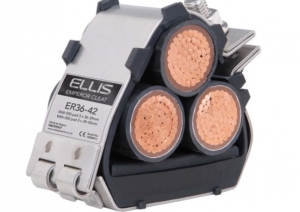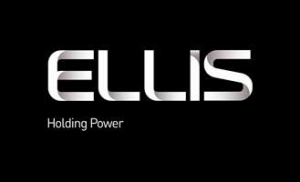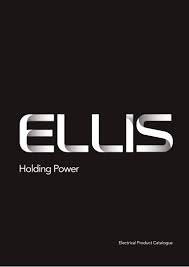
|
|
| home | contact | team t&d | group websites | markets | exports | blog |
 |
|
Cable Cleats - Q&A Session With Ellis Patents
By Chris Dodds on 22nd April, 2014

Ellis Patents Cable Cleats.
T&D are an Ellis Patents distributor for their market-leader range of Cable Cleats manfactured in the UK.
Ellis Patents are global leaders in the innovation and manufacture of nylon, aluminium an d stainless steel cable cleats - EP satisfy the operational requirements of the construction, oil, gas, rail, utilities, wind energy and power generation industries.
d stainless steel cable cleats - EP satisfy the operational requirements of the construction, oil, gas, rail, utilities, wind energy and power generation industries.
Holding Power is Ellis Patents guarantee that EP Cable Cleats will contain dangerous short circuit forces - protecting your people, power and plant. Without fail - specify Ellis Patents Cable Cleats.
Q1 - Is there a recognised cable cleat standard to guide the electrical industry in the selection and specification of cable cleats?
A1 - International Cable Cleat Standard IEC61914:2009 covers the testing and performance of short circuit cable cleats for low and high voltage cable support.
Q2 - What are the key factors in determining the correct cable cleat selection?
A2 - Environment, mounting structure, cable specification, cable configuration, peak short circuit fault level and outside cable diameter - this will enable effective specification of the cable cleat plus recommended cleat spacing.
Q3 - Can the correct cable cleat be specified based only upon the cross sectional area of the cable conductors?
A3 - No, the cable cleat retains around the outside diameter of the cable - see A2.
Q4 - I am confused but impressed by the level of customer choice with respect to triplex cable cleats. Why are there so many Ellis cleat options?
A4 - It is important that when selecting cable cleats for high voltage triplex cables that the cable cleats can handle the anticipated fault currents - also, different DNO's specify different cleats.
Q5 - In order to retain high voltage power cables we require cable cleats with high fault rating but are concerned about potential outer cable sheath damage to "soft-sheathed" type power cables with EPR insulation. Typical oil rig application.
A5 - Specify and install Ellis Patents cable cleats with cushion liners - Ellis Emperor, Ellis Vulcan and Ellis Atlas cable cleats are all available with liners.
Q6 - Why do Ellis Patents manufacture cable cleats with liners?
A6 - Ellis cable cleats with built-in liners provide effective cushioning to cables during short circuit conditions.
Q7 - Can Ellis Patents support their technical specification with Video short circuit testing?
A7 - Yes, watch these Ellis Patents Videos on YouTube
Q8 - Why are cable cleats manufactured in stainless steel and aluminium?
A8 - Stainless steel and aluminium cable cleats are both non-magnetic and unaffected by magnetic fields surrounding low and high voltage power cables. Cables fixed with cable cleats made from magnetic materials would cause localised heating of cleated cables by the effects of induction.
Q9 - What is galvanic corrosion and how may it impact on cable cleat installations?
A9 - Read our Cable Cleats & Galvanic Corrosion blog
Q10 - Can Ellis Patents provide technical advice on cable cleat considerations for multi-core cable installations?
A10 - Of course, here goes. As manufacturers of cable cleats, Ellis Patents are frequently asked for advice on the correct method of securing multi-core power cables.
We are not aware of any published data, which indicates any particular fixing method but custom and practice suggests that most users presume that any forces on the conductors, which arise in the event of a short circuit, will be restrained within the cable jacket and therefore cable cleats are not required.
The mechanisms within a multi-core cable, which help restrain the conductors in the event of a short circuit include:
1. The outer extruded jacket
2. The helical winding of the cores
3. Steel wire or other type of armour if present
In order to be able to provide meaningful advice Ellis Patents undertook a series of short circuit tests using 3 core, copper conductor, multi-core cables from various cable manufacturers.
Both armoured and unarmoured cables were tested across a variety of conductor sizes but because of the number of manufacturers and the variety of cable types and methods of construction available, it was not feasible to carry out exhaustive tests.
The results of the tests were varied but clearly showed that it is unsafe to presume that the forces between the conductors will always be restrained within the jacket of the cable, whether or not the cable is armoured or tightly helically wound.
Ellis Patents conclusion is that, unless the relevant cable manufacturer can give assurances regarding the performance of their specific cable at the anticipated fault level, fault rated cable cleats provide the safest option for securing multi-core cables.
Ellis Patents Ltd carry out a regular schedule of short-circuit tests. If you are planning a project and would like certainty regarding the cable fixings for your installation (whether single or multi-core cables are included in the design) T&D and Ellis Patents would be happy to conduct a bespoke test, on your behalf, within our regular programme of work.
- Further Ellis Patents reading
Ellis Patents Cable Guide Clamp - Video
Cable Cleats - The Ellis Patents Black Book Guide To Cable Cleats
Cable Cleats From Ellis Patents - The Innovation Game
Invitation
Thorne & Derrick are inviting you to join LinkedIn’s fastest growing Discussion Group : Low & High Voltage Power, Cabling, Jointing, & Hazardous Area Electricals (LV-HV).
Discussion subjects include cable installations, cable jointing, electrical substation, overhead line and electrical construction at LV, 11kV, 33kV and EHV.
Network, engage and promote your profile, company or products with over 10,000 influencers.
Category: Cable Cleats & Cable Ties
Sort by Category:
- #ThrowBackThursday
- 3M Scotch Tapes
- ABB Power Products
- Business
- Cable Accessories
- Cable Cleats & Cable Ties
- Cable Containment LV HV
- Cable Crimping & Cutting Tools
- Cable Jointer Training Courses
- Cable Jointing - PhotoBlog
- Cable Labelling & Marking
- Cable Laying & Cable Pulling
- Cable Transits & Duct Sealing
- Company Updates
- Earthing & Lightning Protection
- Electrical Equipment HV
- Electrical Equipment LV
- Electrical Safety & Arc Flash
- Exports
- Flexible Conduit Cable Management
- Hazardous Area Electricals & Lighting
- HV Cable Jointing & Terminating
- LV Cable Jointing & Terminating
- Nexans Euromold Cable Accessories
- Plugs & Sockets
- Power Distribution & Feeder Pillars
- Prysmian FP Cables
- PV Solar Farms
- Rail
- T&D History Blog
- Terms & Conditions of Sale & Purchase
Tweets by @ThorneanDerrick































